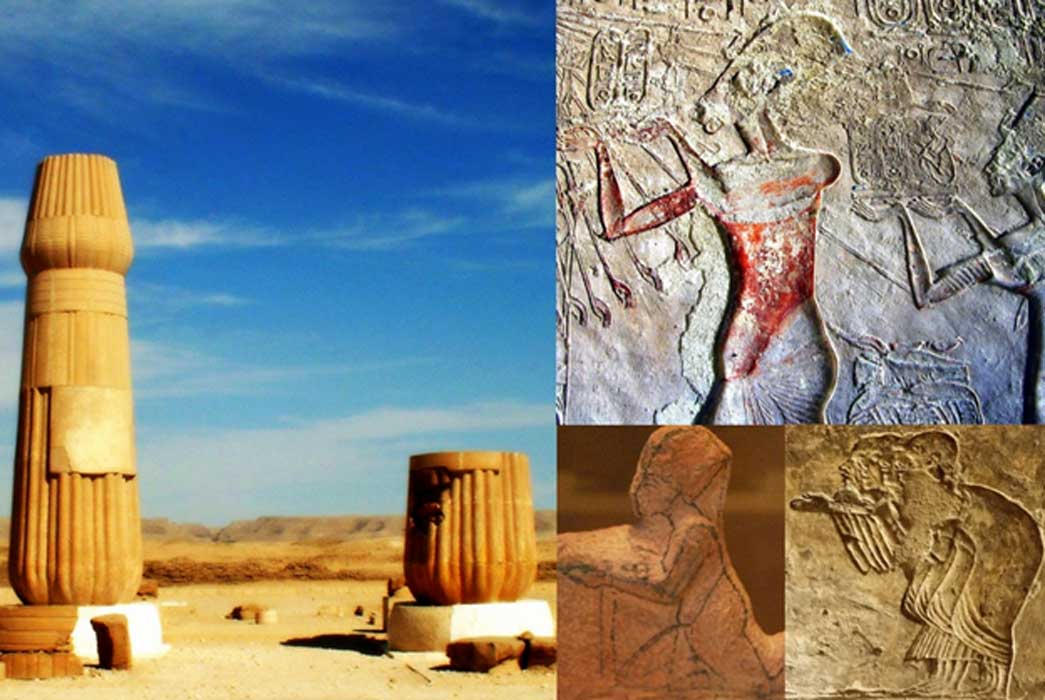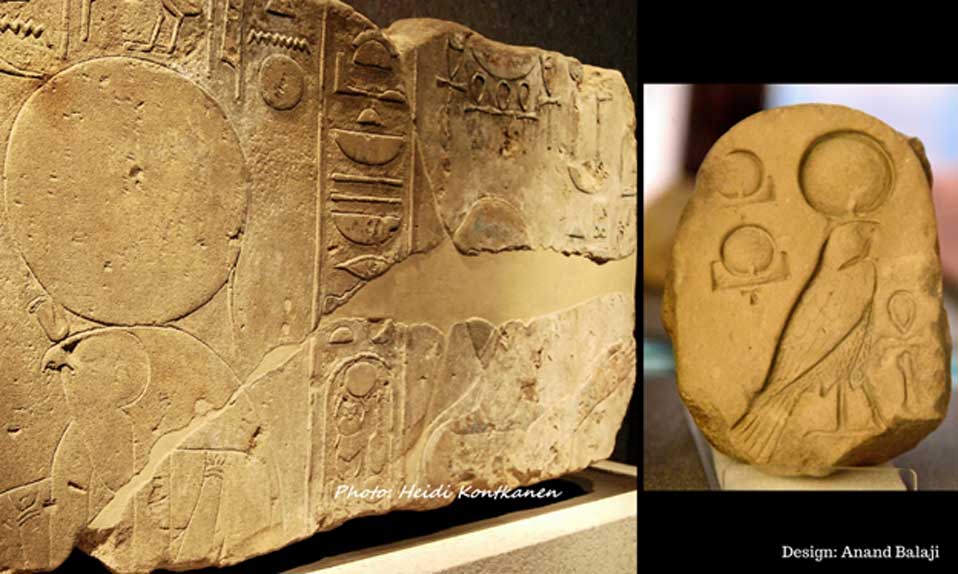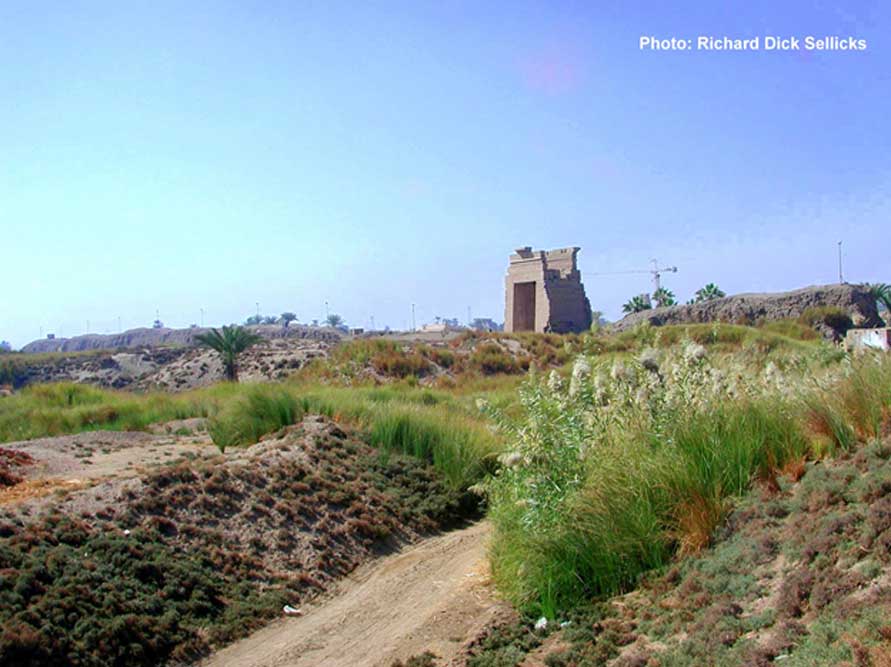
Akhenaten: Imperishable Art of an Iconoclast: Age of Extravagance in Amarna—Part II
The monuments Akhenaten constructed were no less impressive than those of his father, Amenhotep III. But all his buildings were dismantled and destroyed during the Amarna backlash—including the city of Akhetaten, which vanished beneath the desert sands for millennia. But art ultimately resurrected the pharaoh’s memory in our time.

A Karnak Temple relief from early in Akhenaten’s reign shows him with Ra-Horakhty, traditionally depicted with a hawk’s head. Neues Museum, Berlin. (Right) An inscribed limestone fragment from Amarna shows an early Aten cartouche, “the Living Ra-Horakhty”. Petrie Museum, London. (Photo: Osama Shukir Muhammed Amin FRCP(Glasg)/CC BY-SA 4.0).
ZENITH OF ATEN ADORATION
During the first five years of his reign, Akhenaten decorated the southern entrance to the precincts of the temple of Amun-Re with scenes of himself worshipping Ra-Horakhty the falcon-headed aspect of the sun. From an examination of the Gem-pa-aten reliefs in Karnak, Egyptologists discovered the remnants of four distinct structures. Beginning 1925, Maurice Pillet, French architect and director of works for the Egyptian Antiquities Service at Karnak discovered huge colossi in the drainage ditch east of the eastern gate of the enclosure wall of the Karnak Temple. Later, Egyptologist and Inspector of Antiquities at Karnak from 1925 to 1952, Henri Chevrier, unearthed even more destroyed statues of Akhenaten.

This image from 2004 shows the ancient site of Akhenaten’s Gem-pa-Aten Temple at Karnak. It was situated east of the Amun Temple so that the rays of the sun would reach it first each morning.
The Gm–p3–itn (Gem-pa-Aten / “The Sun Disc is Found in the Estate of the God Aten”) in Ipet-sut (Karnak: “most select/sacred of places”); that was strategically located east of the temple of Amun, to bathe in the first rays of the sun each morning, was an enormous temple dedicated to the Aten. It was fronted by an open court with a colonnade of square sandstone pillars some 23-feet (seven meters) high, against which rested alternating colossal statues of the King and Queen Nefertiti. Rita Freed postulates “... some of the king’s ideas must have evolved as the colossi were carved, since many show corrections in the area of the eyes, the headgear, and the navel.” Elsewhere, the eyes have been enlarged and/or elongated. The other structures here were named Hwt–bnbn (Hwt benben / “The Mansion of the Benben stone”), Rwd–mnw–n–itn–r–nḥḥ (Rud-menu / “Sturdy are the Monuments of the Sun Disc Forever”), and Tni–mnw–n–itn–r–nḥḥ (Teni–menu / “Exalted are the Monuments of the Sun Disc Forever”).

A selection of the remnants of Akhenaten’s colossal statues that were deliberately smashed and knocked to the ground at Karnak, when the temples he had dedicated to the Aten were destroyed during the Amarna backlash. Luxor and Cairo Museums.
One of the major reasons for this extraordinary haste in construction was due to Akhenaten’s wish to celebrate the Heb Sed festival; depictions of which he had carved in the colonnaded court of the Temple of Aten at Karnak. Several innovative concepts in construction here relate to building and structural design, including a change from the mausoleum style to open courtyards that enabled the rays of the Aten to illuminate the temple and the faithful. In fact, it is believed that the courtyard beyond the Colonnade of Amenhotep III in Luxor—the so-called “Great Sun Court”—was a precursor to Akhenaten’s open-air Aten temples.




